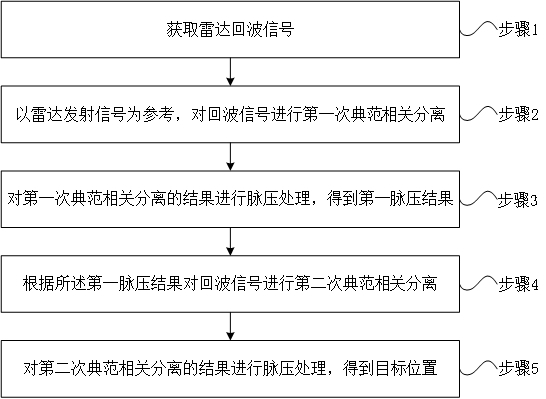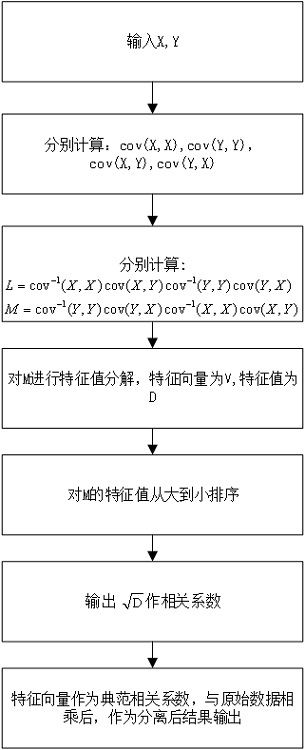Method and device for separating main lobe interference suppression based on canonical correlation
A technology of canonical correlation and main lobe interference, which is applied in the field of main lobe interference suppression based on canonical correlation separation, can solve the problems of inapplicable interference signals, increased system cost, and inability to suppress noise convolution interference, so as to improve anti-interference characteristics and realize The effect of low cost and small amount of computation
- Summary
- Abstract
- Description
- Claims
- Application Information
AI Technical Summary
Problems solved by technology
Method used
Image
Examples
Embodiment 1
[0057] See figure 1 , figure 1 It is a flow chart of a method for suppressing mainlobe interference based on canonical correlation separation provided by an embodiment of the present invention, which includes:
[0058] Step 1: Get the radar echo signal.
[0059] In this embodiment, multiple receiving channels are used to receive echo data of radar signals, and the echo signals include target echo signals and interference signals.
[0060] Specifically, the transmission signal of the radar adopts a linear frequency modulation signal, and its expression is:
[0061]
[0062] in,
[0063]
[0064] here, is the pulse width, is the pulse duration.
[0065] The echo received by the radar receiver from the target will be a complete transmitted signal, which can be expressed as:
[0066]
[0067] Indicates the delay of the electromagnetic wave reflected by the target.
[0068] Further, the interference signal adopts intermittent sampling interference and noise c...
Embodiment 2
[0109] In order to further verify the beneficial effects of the present invention, a comparative description will be made through simulation experiments below.
[0110] 1. Experimental conditions:
[0111] The interference signals used in this experiment are intermittent sampling forwarding interference and noise convolution interference. Among them, the number of intermittent sampling and forwarding interference points per sampling is 1 / 4 of a pulse, assuming that they are forwarded to the front and back of the target. Noise convolution jamming is to convolve the entire radar transmitted signal with Gaussian white noise. See Table 1 for other relevant parameters.
[0112]
[0113] 2. Experimental content and result analysis:
[0114] Experiment 1: The method of the present invention and the traditional PC radar are used to process the received radar echoes including target echoes and intermittent sampling and forwarding interference.
[0115] See Figure 4 , Figure 4 ...
Embodiment 3
[0122] On the basis of the first embodiment above, this embodiment provides a device for suppressing main lobe interference based on canonical correlation separation. See Figure 8 , Figure 8 It is a schematic structural diagram of a device for suppressing mainlobe interference based on canonical correlation separation provided by an embodiment of the present invention, which includes:
[0123] A signal acquisition module 1, configured to acquire radar echo signals including interference signals;
[0124] The first separation module 2 is configured to perform canonical correlation separation on the echo signal for the first time by using the radar transmission signal as a reference;
[0125] The first pulse pressure module 3 is used to perform pulse pressure processing on the result of the first canonical correlation separation to obtain the first pulse pressure result;
[0126] The second separation module 4 is configured to perform a second canonical correlation separati...
PUM
 Login to View More
Login to View More Abstract
Description
Claims
Application Information
 Login to View More
Login to View More - R&D
- Intellectual Property
- Life Sciences
- Materials
- Tech Scout
- Unparalleled Data Quality
- Higher Quality Content
- 60% Fewer Hallucinations
Browse by: Latest US Patents, China's latest patents, Technical Efficacy Thesaurus, Application Domain, Technology Topic, Popular Technical Reports.
© 2025 PatSnap. All rights reserved.Legal|Privacy policy|Modern Slavery Act Transparency Statement|Sitemap|About US| Contact US: help@patsnap.com



